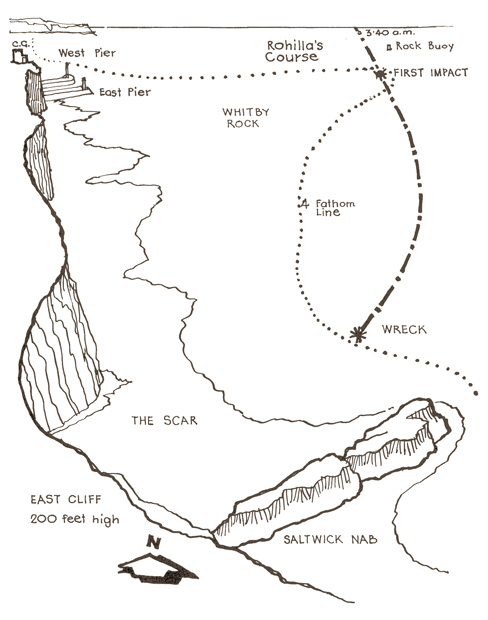
At the moment of impact, the Captain had not received Graham’s report on the sea depth an did not realise the ship was near the shore. By his reckoning they were at least seven miles out to sea. Jefferies’ morse had not been translated nor had it been recognised as a land – based signal.
The shock of the impact was sudden and totally unexpected.
Captain Neilson reacted instinctively. He ordered “Engines Full Astern” to stop the ship.
Then, thinking they were out to sea, he decided to make for the shore, assuming the hull would have been damaged below the waterline and the ship would sink. He ordered “Engines Full Ahead.” And “Helm, Hard – a – Port”.
To make for the shore the ship would have to turn to starboard (right). Being a large ship the Rohilla was fitted with a steering engine to turn the heavy rudder. This was connected to the helm by a system of gears to give “direct” steering – the helm turned in the intended direction of travel. The order should have been “Helm. Hard – a – Starboard.”
Captain Neilson’s early career was spent in sailing ships which was steered “indirectly” – the helm ordered in opposite direction. If the Captain reverted to the old form in the crisis, the helmsmen understood. The Rohilla turned Starboard.
| 20 21 22 23 24 25 26 27 28 29 30 31 32 33 34 35 36 | 37 | 38 | 39 | 40 |
Copyright © Ken Wilson 1981
